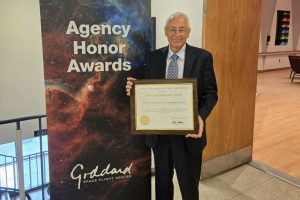NASA recently presented the Silver Group Achievement Award to 232 experts worldwide for their contribution to the commissioning of the James Webb Space Telescope (JWST). These experts worked around the clock during the six months of commissioning. Their hard work ensured that the final performance of all the instruments exceeded the original specifications. The team includes six Frenchmen, four of which belong the Astrophysics Department at Irfu, CEA Paris-Saclay.
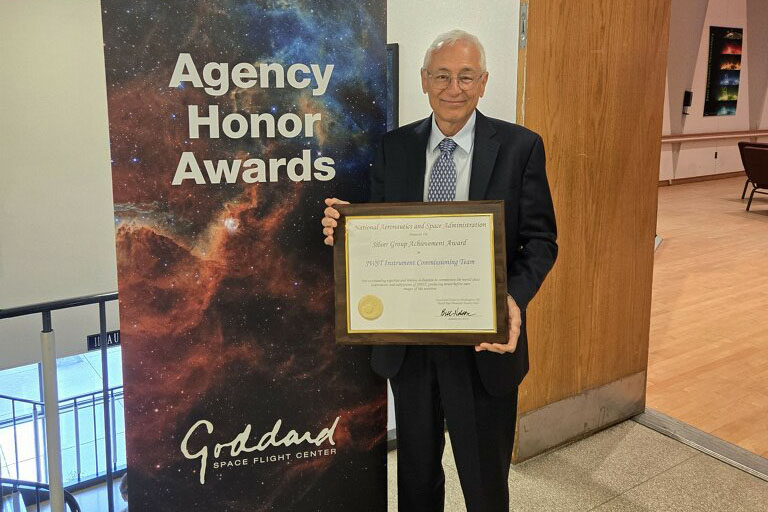
A teamwork
The James Webb Space Telescope (JWST) is the world’s premier astrophysics observatory and an undeniable success. The dedicated teams that confirmed the operation of the scientific instruments (SI) and subsystems during the six-month commissioning period are the key to this success. Through meticulously planned sequences and careful coordination of all observatory activities, these international teams ensured 24/7 coverage, examined data, and resolved issues as they arose.
Among them were four individuals from the Astrophysics Department at Irfu, CEA Paris-Saclay: Pierre-Olivier Lagage, researcher and co-lead of the MIRI instrument, along with Christophe Cossou, Daniel Dicken, and Alain Coulais, research engineers who contributed to the development of MIRI.
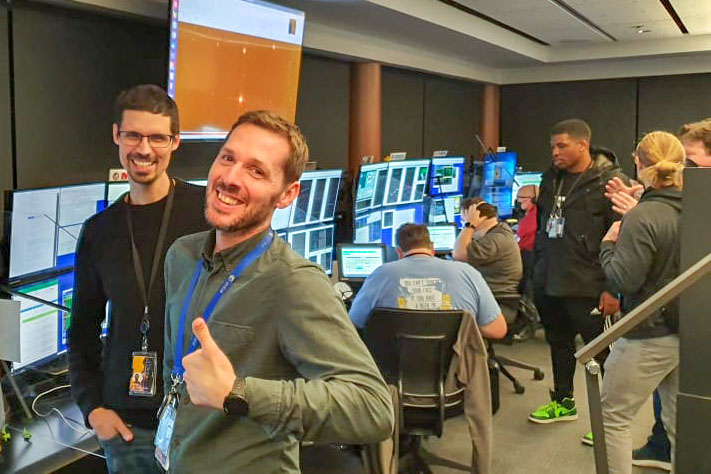
Commissioning MIRI
One of the features of the JWST is its ability to observe in the mid-infrared portion of the electromagnetic spectrum through the MIRI (Mid-InfraRed Instrument), which has significant French contributions. These observations are made possible by active cooling provided by a cryocooler, which “extracts” heat from MIRI’s focal planes and optics, delivering unprecedented spectroscopic performance. It took three months after the telescope’s launch for the cryocooler to reach the required temperature of 7 K, nearly -266°C.
“I was at the controls when we started the cryocooler and everything went beautifully. Watching the temperature drop live… that’s when you know it’s going to be okay!” says Alain Coulais, a research engineer seconded to the Astrophysics Department at CEA-Saclay.
Thanks to precise planning of tests and data analysis by the teams (see Figure 3), the MIRI instrument was fully commissioned in just three weeks. MIRI encountered only one issue: an unexpected stray light characteristic that caused the initial method for aligning the coronagraphs to fail. Once this problem was resolved, the coronagraphs were aligned and exceeded their initially expected performance by a factor of four.
“Being at the controls to open the instrument to the sky and then capturing the first image was a magical moment, the culmination of several years of preparation,” explains Christophe Cossou, a research engineer at the Astrophysics Department of CEA-Saclay.
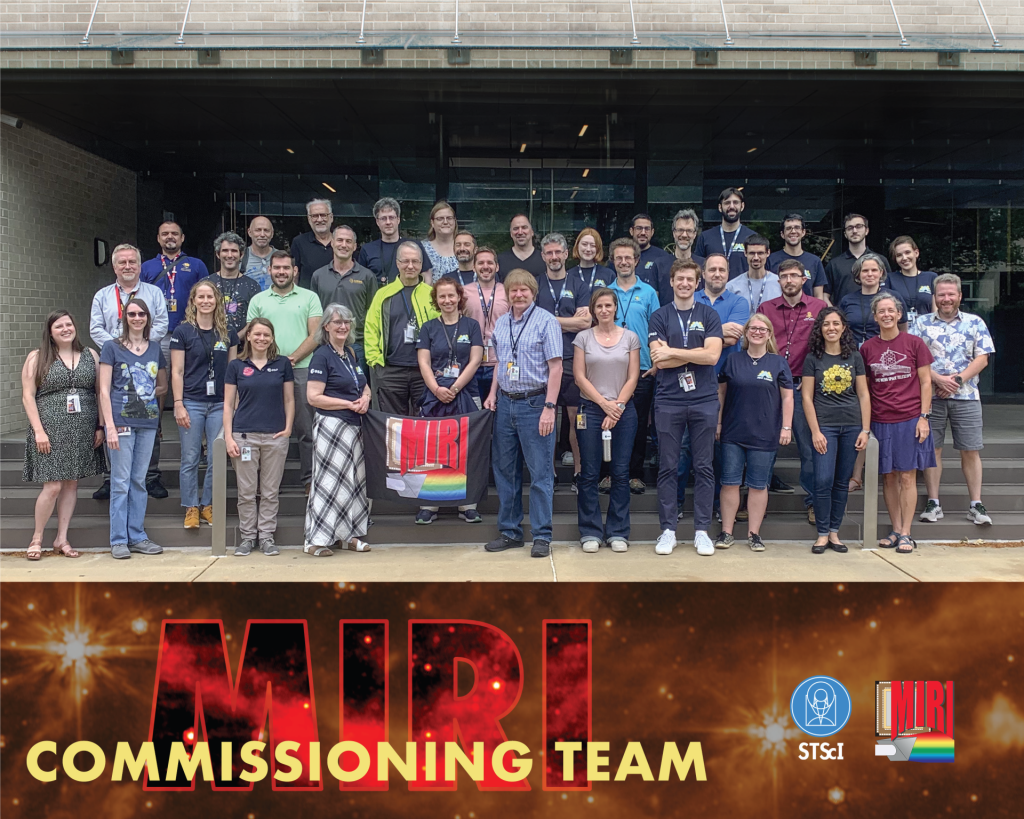
Commissioning NIRCam
The team responsible for the near-infrared camera (NIRCam) ensured optical alignment of the 18 segments of the JWST primary mirror (see Figure 4). They addressed issues of pointing stability, unexpected thermal states and the execution of activities that resulted in an aligned telescope that exceeds the specifications for which it was built.
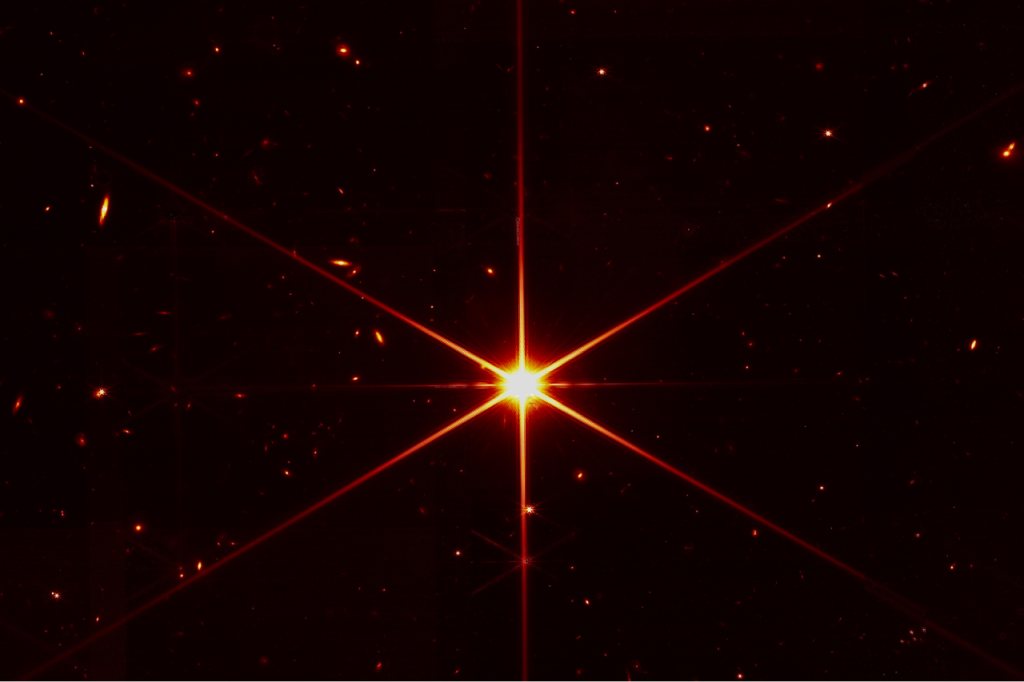
Commissioning NIRSpec
Within the Near Infrared Spectrograph (NIRSpec) team, each observation was meticulously planned to ensure maximum efficiency, and all calibration activities were completed within the allocated time.
NIRSpec utilizes arrays of 250,000 microshutters (MSA), small windows that can be individually selected to observe target stars (see Figure 5). To address issues with MSA target acquisition, the team spent days and nights identifying and resolving problems with related systems.
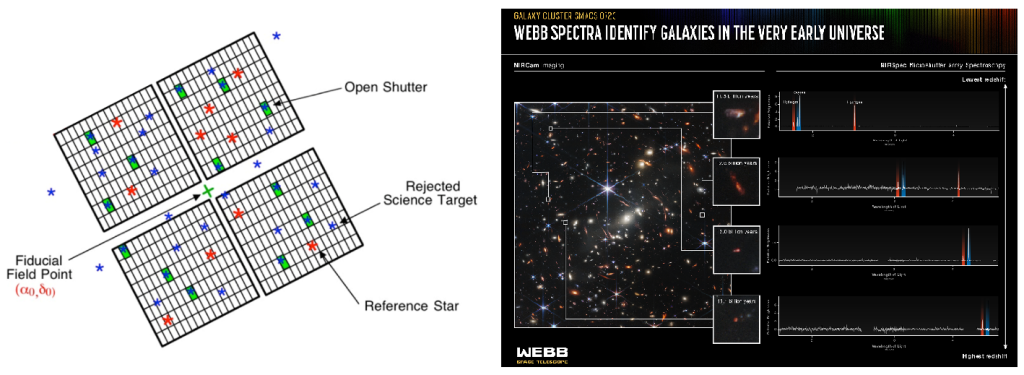
Commissioning FGS
The Fine Guidance Sensor (FGS) provides images of cataloged stars to the attitude control system 16 times per second, enabling Webb to point with precision and remain very stable over long durations (see Figure 6). Thanks to the efforts of the FGS team, the pointing accuracy also exceeds the initially specified requirements.
Guidance requires almost constant monitoring from the console. The team conducted numerous FGS-specific rehearsals to prepare for the complex mirror alignment process. Their efforts led to several major achievements that enhanced the guiding capabilities. They analyzed images to generate updated parameters, thereby improving guiding performance for both bright stars and crowded fields. Additionally, they refined the command scripts to optimize overall performance.

Commissioning NIRISS
One problem solved by the Near Infrared Imager and Slitless Spectrograph (NIRISS) team was scattered light from the MIRI Heat Exchanger Assembly (HSA). They identified the problem and confirmed that once the HSA had cooled down, signal levels fell to the expected limits (see Figure 7).
After an initial target acquisition failure, the team worked to correct the on-board scripts, resulting in target acquisition that exceeded expectations.

ICDH and ISIM
The Integrated Science Instrument Module (ISIM) Command and Data Handling (ICDH) system and the ISIM Remote Services Unit (IRSU) may not receive the acclaim of the scientific instruments, but without them, there would be no software to capture images, no commands, and no data transmitted to the ground.
This team supported tests and rehearsals both before and after launch, working around the clock during the entire six-month commissioning period. Not only did their subsystems operate smoothly, but their expertise also proved invaluable to other teams when issues arose.
The results of the joint commissioning team’s dedication are vividly illustrated by the inspiring images released to the public (see Figure 8).

Contacts : Pierre-Olivier Lagage, Christophe Cossou, Alain Coulais
Further information:
- Description of the JWST scientific instruments
- Christophe Cossou and Pierre Guillard talk about the Commisioning phase in the CEA podcast dedicated to the JWST
- Christophe Cossou on the first images of MIRI, the instrument with French connotations
- Administrator’s Awards Ceremony at the Glenn Research Center


